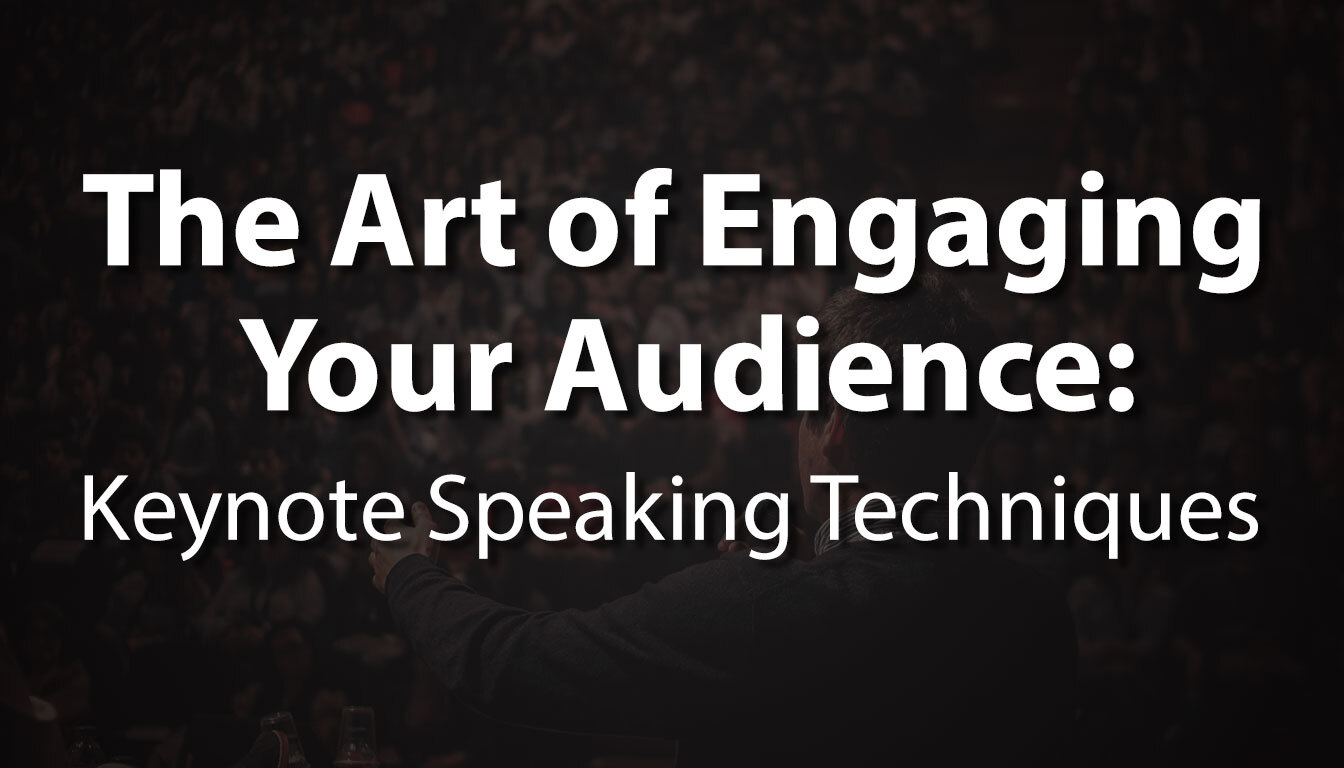
The Art of Engaging Your Audience: Keynote Speaking Techniques
Introduction
The ability to captivate an audience is a powerful skill, especially for those stepping into the world of keynote speaking. Whether you are a seasoned speaker or just starting, mastering the art of engagement is crucial.
So, you've been invited to give a keynote speech! Exciting, right? But the thought of standing in front of hundreds of people can also be nerve-wracking. Fear not! With a few key techniques, you can transform your presentation from good to unforgettable, leaving your audience captivated and wanting more.
In this blog, we'll explore practical and simple techniques to keep your audience hooked from the moment you step onto the stage.
- Know Your Audience: Before you draft a single word, understand who you're speaking to. The foundation of engaging keynote speaking lies in understanding your audience. Who are they? What are their interests? What challenges do they face? What knowledge do they already have? Tailoring your content to their needs will instantly increase engagement. Speak their language, and you will be in!!
- Tell a Story: Facts are important, but stories are powerful. People connect through stories. Weave personal anecdotes, historical examples, real-life examples or inspiring case studies into your speech. Stories connect with people on an emotional level, making your message more memorable.
- Start Strong, Finish Strong: The first few minutes and the last few seconds are crucial. The first few moments set the tone for your entire keynote. Start with a compelling story, a thought-provoking question, a captivating story, or a surprising fact. Capture their curiosity right from the beginning. End with a powerful call to action, leaving your audience with a clear takeaway.
- Speak with Passion: People connect with genuine enthusiasm. Speak with passion about your topic, even if it's something technical. Your passion will be contagious and draw your audience in.
- Be Conversational: Ditch the monotone lecture! Use natural language, vary your pace and tone, and even inject some humor. Imagine you're having a conversation with a friend, not reciting a script.
- Use Visuals Effectively: Utilize visuals to enhance your message. Slides, infographics, or short videos can add a dynamic element to your presentation. Make sure visuals complement your words and don't distract. Slide decks can be your friend, but avoid text overload. Use high-quality images, infographics, or videos to break up text, illustrate your points, and keep your audience visually engaged.
- Interact with Your Audience: Don't just talk to them, talk with them! Ask questions, invite participation, and respond to audience reactions. Incorporate interactive elements like polls, Q&A sessions, or even a short activity. This creates a sense of connection and keeps them actively involved. This not only keeps them engaged but also makes your keynote more memorable.
Foster a sense of participation by encouraging audience members to share their thoughts, answer questions, or discuss ideas. This creates a more inclusive and engaging atmosphere. - Move Around: Don't be glued to the podium! Move around the stage naturally, use gestures to emphasize your points, and make eye contact with different audience members. This keeps your energy high and prevents them from feeling bored.
- Practice, Practice, Practice: Perfection isn't the goal, but preparation is key. Rehearse your speech out loud, time yourself, and get feedback from friends or colleagues.
- Embrace Mistakes: Don't sweat the small stuff. Everyone makes mistakes. Acknowledge it, move on gracefully, and use it as an opportunity to connect with your audience on a human level.
- Varied Pace and Tone: Keep your audience on their toes by varying your pace and tone. Use moments of intensity, humor, or reflection strategically. Monotony can lead to disengagement, so mix it up!
- Conclude with Impact: Just as you started strong, finish with impact. Summarize your key points, leave them with a memorable takeaway, or end with a powerful call-to-action. Make the conclusion as powerful as the beginning.
Bonus Tip: Be Yourself:
You're the expert, so share your unique perspective and insights. Authenticity resonates and makes your presentation more impactful.
Apart from this bonus tip, you can go through our blog “What Makes a Good Social Media Keynote Speaker?” to get more ideas about how to identify a good keynote speaker, his qualities, etc.
Conclusion
Remember, engaging your audience is not an easy task, it’s a journey, not a destination. By incorporating these techniques and practicing, you can transform your keynote speaking skills and leave your audience inspired, informed, and wanting more. It is true that the right keynote speaker can make a positive impact on the audience and can boost your event. Read our interesting blog on “How the Right Keynote Speaker Can Boost Your Event?”, here!
Are you looking for a famous social media keynote speaker in Pune? Certainly, there are many keynote speakers in India and you can realize their potential and power through their keynote talks! Find out more about keynote speakers in India through our blog, “Unleashing the Power of Keynote Speakers in India”!
Amongst all, Mr. Amit Jadhav is the one you are searching for! He is the best keynote speaker in Pune and also one of the famous keynote speakers in India! His sessions are interactive, engaging, energetic and insightful.
Mastering the art of engaging your audience in keynote speaking involves a combination of thoughtful preparation, understanding your audience, and utilizing dynamic presentation techniques. By weaving relatable stories, incorporating visuals, and creating interactive moments, you can leave a lasting impression and make your keynote an experience that resonates with your audience long after the applause fades. Keep practicing, stay authentic, and enjoy the journey of captivating your audience through the art of speaking.
- Amit Jadhav
www.amitjadhav.com
